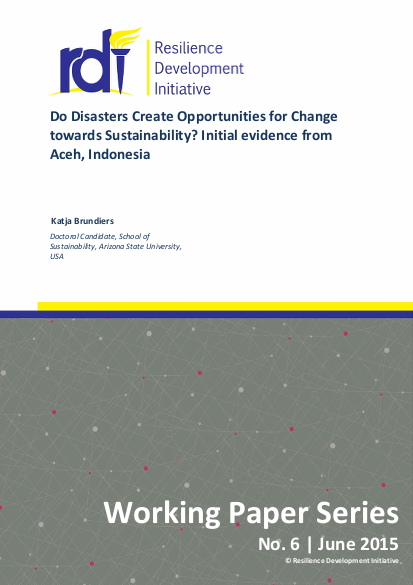
This study looks at how people and organizations - in the midst of post-disaster devastation and loss - are able to see and seize opportunities for change towards sustainability. The post-disaster recovery process from the 2004 Indian Ocean tsunami devastating Aceh, Indonesia is one of the cases with mixed accounts that framed their recovery around the goals of building back better. This study looks at this case to shed light on how opportunities were seen and seized over the last 10 years.
The initial research findings suggest that major achievements towards sustainability were made, in particular negotiating a peace-agreement that resulted in ongoing peace. However, progress towards sustainability is more dominant in some daily activity fields (e.g., educating, caring, engaging recreating, communicating) than in others (e.g., working, housing) and more work still needs to be done even in the domains where progress towards sustainability is manifest (e.g., difficulty for well educated youth to find local employment). Nevertheless, there is lots that people and organizations - as part of their disaster preparedness efforts - can learn from the leaders of the Acehnese sustainability change initiatives.